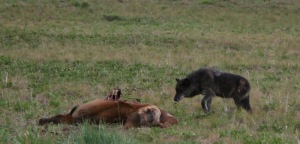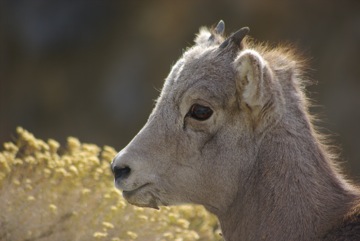Questions about who knew what and when they knew it.

Bighorn Sheep © Ken Cole
The controversy over whether domestic sheep transmit deadly pathogens to bighorn sheep seems to have been settled.
At issue now is whether studies were intentionally suppressed by staff of the Caine Veterinary Teaching Center in Caldwell Idaho, whether leadership at the lab had cultivated a working environment so pervasivesly sympathetic to the livestock-industry that objective science was a far-shot anyway, whether it was both, neither, or somewhere in-between. One thing’s certain in our minds, land-grant Universities throughout the West show similar signs of livestock industry fostered bias – it’s just easier to get federal and state grants that way, and our public landscape and wildlife continue to take the short-end for it.
Specific to this case, there is question as to whether Dr. Marie Bulgin, who is the Teaching Program Coordinator of the lab and is/was the president of the Idaho Woolgrowers Association, knew about the studies before testifying to the Idaho Legislature and in front of a Federal Judge.
When confronted with the existence of the paper :
Contacted Thursday, Bulgin, a past president of the Idaho Wool Grower’s Association who worked at the Idaho center in 1994 but took over as coordinator only in 2003, said she knew nothing about the research until earlier this year.
As recently as April 3, 2009 I (Ken) witnessed Dr. Marie Bulgin testify to the Idaho State Legislature that there was no evidence of transmission between domestic sheep and bighorn sheep in the wild. You can also see here that Senator Jeff Siddoway used this testimony to convince the legislature to pass S1175.
Sen. Siddoway also explained that according to Marie Bulgin, a University of Idaho veterinarian, no scientist has found a single instance of pasteurella moving from domestic sheep to bighorn in 19 years of research.
There exists a copy of the paper, which has not been published nor peer reviewed, obtained by Western Watersheds Project recently after being made aware of it several months ago. The paper outlines two incidents in 1994 where bighorn sheep were observed intermingling with domestic sheep. One of the bighorn sheep had been relocated several months previous to the incident and at the time of relocation had been found to be free of the pathogen. The bighorn were each captured and taken to the Caine lab where they were held in isolation, had samples taken from them and they subsequently died of pneumonia. Samples were taken from the domestic sheep as well and when the two were compared biochemically identical strains of Pasteurella haemolytica were found in both the bighorn sheep and domestic sheep samples. Marie Bulgin’s daughter was acknowledged in the paper for her contribution to the lab work that took place back in ’94.
The Idaho Statesman issued an Editorial Opinion about the issue.
Our View: You can’t pull wool over the eyes of science
– Idaho Statesman
Rocky Barker also writes about the issue.
Was bighorn research at the University of Idaho suppressed?
BY ROCKY BARKER
Sheep-bighorn battle dike breaks
BY ROCKY BARKER
Ken Cole and Brian Ertz contributed to this post.
UPDATE: UI investigating researcher over bighorn study John Miller AP



















